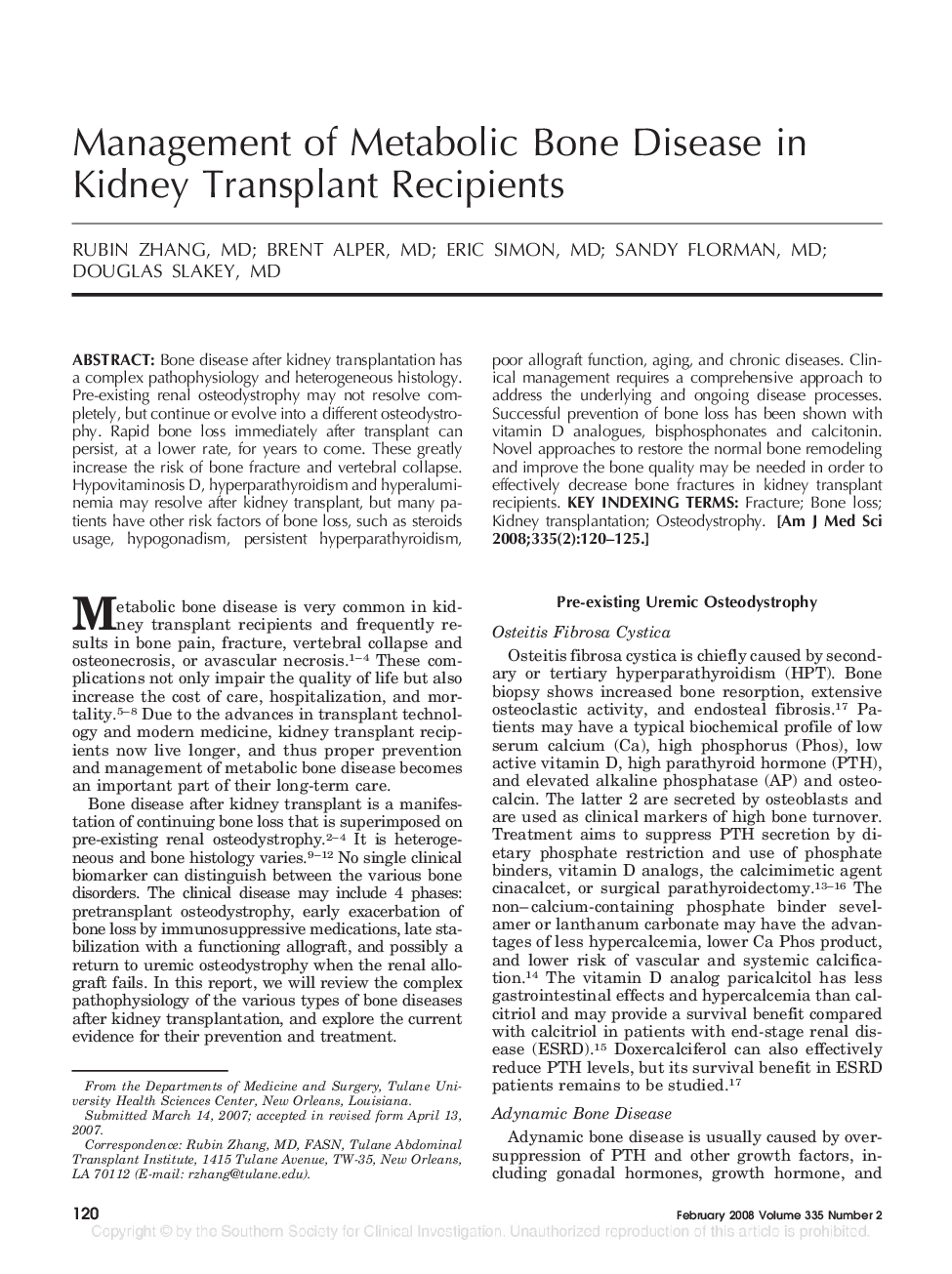| Article ID | Journal | Published Year | Pages | File Type |
|---|---|---|---|---|
| 2865093 | The American Journal of the Medical Sciences | 2008 | 6 Pages |
Abstract
Bone disease after kidney transplantation has a complex pathophysiology and heterogeneous histology. Pre-existing renal osteodystrophy may not resolve completely, but continue or evolve into a different osteodystrophy. Rapid bone loss immediately after transplant can persist, at a lower rate, for years to come. These greatly increase the risk of bone fracture and vertebral collapse. Hypovitaminosis D, hyperparathyroidism and hyperaluminemia may resolve after kidney transplant, but many patients have other risk factors of bone loss, such as steroids usage, hypogonadism, persistent hyperparathyroidism, poor allograft function, aging, and chronic diseases. Clinical management requires a comprehensive approach to address the underlying and ongoing disease processes. Successful prevention of bone loss has been shown with vitamin D analogues, bisphosphonates and calcitonin. Novel approaches to restore the normal bone remodeling and improve the bone quality may be needed in order to effectively decrease bone fractures in kidney transplant recipients.
Related Topics
Health Sciences
Medicine and Dentistry
Cardiology and Cardiovascular Medicine
Authors
Rubin MD, Brent MD, Eric MD, Sandy MD, Douglas MD,
